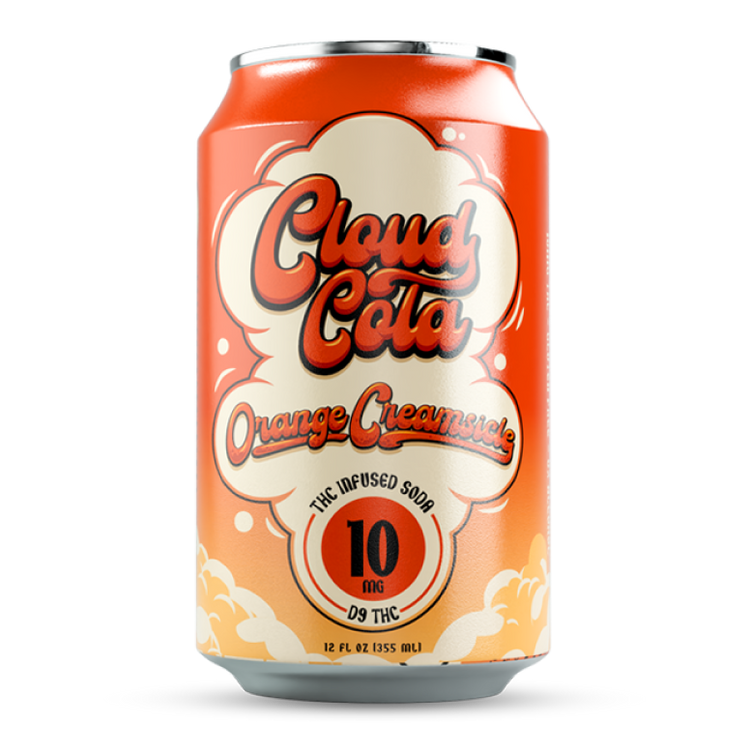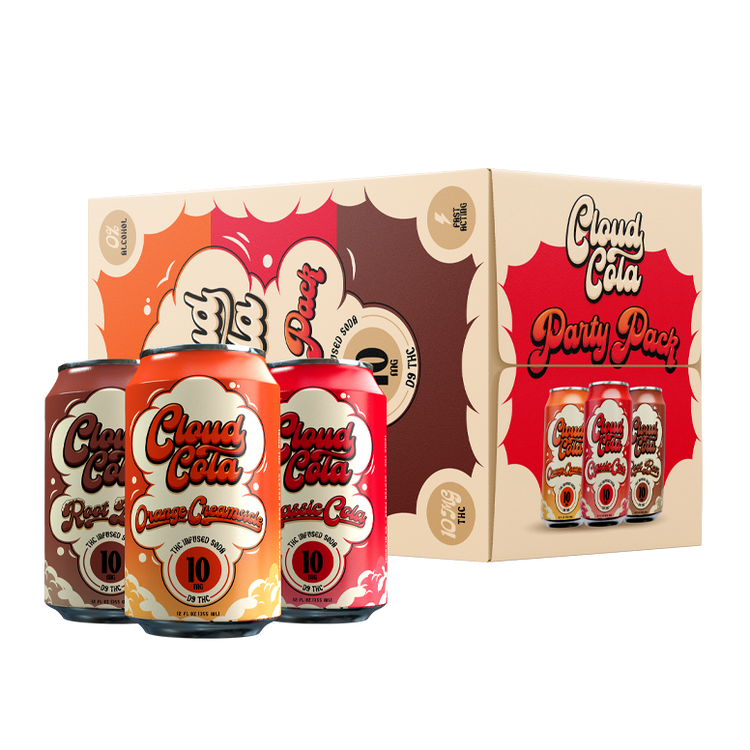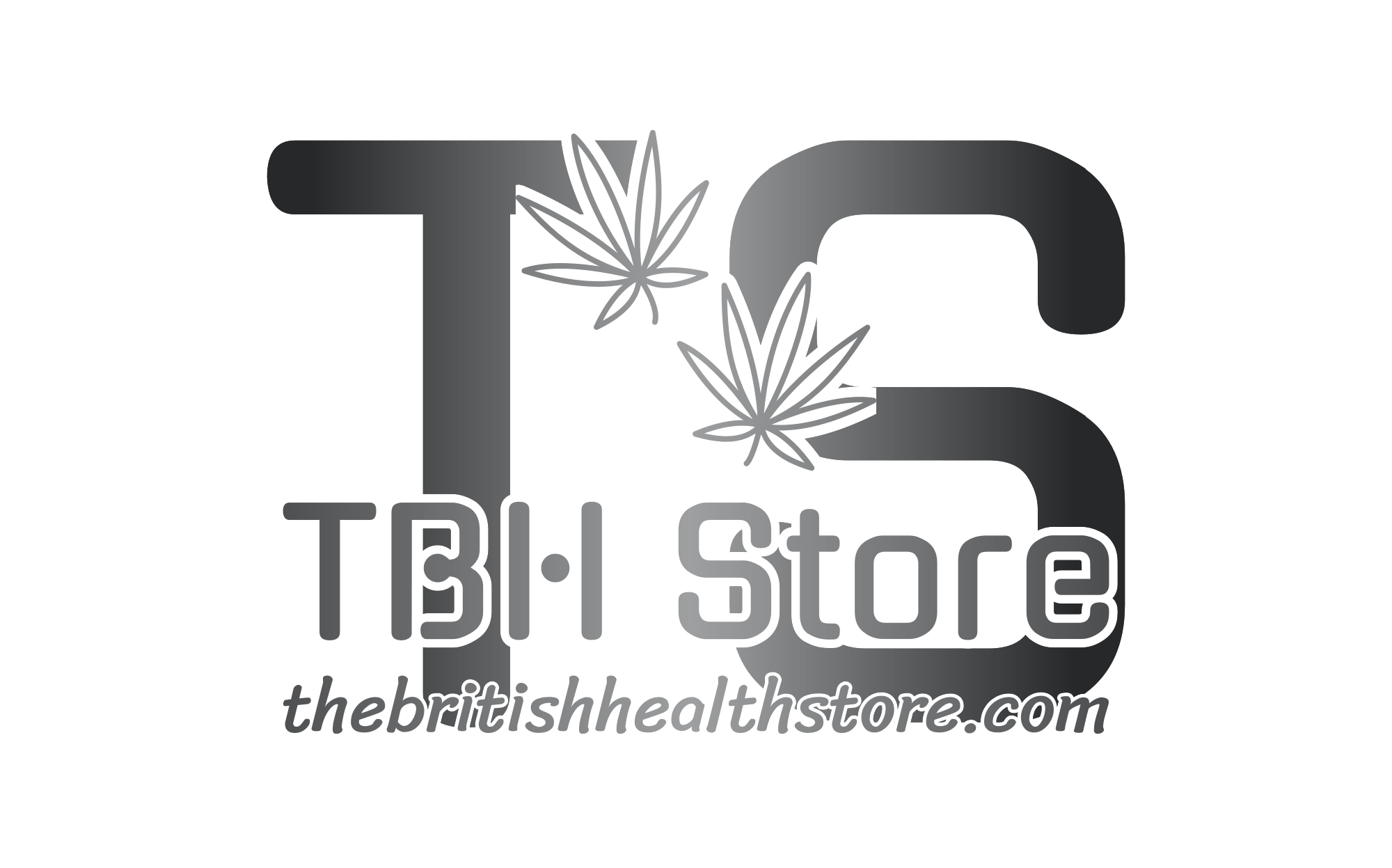The Appeal of Low-Dose THC
A growing number of people are turning to low-dose THC edibles, particularly sodas, as a way to experience the therapeutic benefits of cannabis without the psychoactive effects associated with higher doses. This trend, often referred to as “microdosing,” has gained significant traction in recent years, driven by an increasing understanding of the potential health advantages of THC and a desire for more controlled and subtle experiences.
Discreet Consumption
The appeal of low-dose THC sodas stems from their ability to provide a milder, more manageable experience. Microdosing allows individuals to explore the therapeutic benefits of THC, such as pain relief, anxiety reduction, and improved sleep, without feeling overwhelmed by intense psychoactive effects. The discreet nature of these beverages further enhances their appeal, enabling consumers to incorporate cannabis into their daily routines without drawing attention.
Relaxation and Focus Enhancement
One key factor driving the rise in low-dose THC sodas is the potential for relaxation and enhanced focus. Research suggests that consuming small amounts of THC can promote a state of calm and mental clarity. This makes it appealing to individuals seeking a natural alternative to address stress, improve concentration, and enhance overall well-being.
Potential for Therapeutic Benefits
The increasing interest in low-dose THC sodas is fueled by the potential therapeutic benefits associated with microdosing. Studies indicate that small amounts of THC can interact with the body’s endocannabinoid system, offering a range of advantages. For instance, low-dose THC has shown promise in managing chronic pain, as it can modulate pain signals and reduce inflammation.
Furthermore, research suggests that microdosing THC may be beneficial for individuals struggling with anxiety and sleep disorders. The calming effects of THC can help alleviate symptoms of anxiety and promote relaxation, leading to improved sleep quality.
The Science Behind Microdosing THC
A burgeoning body of scientific research is illuminating the potential benefits of microdosing THC, a practice involving the consumption of very small amounts of the cannabis compound.
Understanding the Endocannabinoid System
At the heart of this trend lies the endocannabinoid system (ECS), a complex network of receptors and neurotransmitters found throughout the body. The ECS plays a crucial role in regulating various physiological processes, including mood, sleep, pain perception, and appetite.
THC, the primary psychoactive component of cannabis, interacts with specific receptors within the ECS, primarily CB1 receptors, which are concentrated in the brain and central nervous system. Microdosing THC, due to its minimal dose, is thought to subtly influence this system without producing the characteristic “high” associated with larger doses.
This subtle interaction may contribute to the reported therapeutic effects of microdosing. For example, by modulating CB1 receptors in areas of the brain associated with pain processing, THC could help alleviate chronic pain sensations. Similarly, its influence on areas involved in mood regulation might explain its potential to reduce anxiety and promote feelings of calm.
How Microdoses Impact Brain Chemistry
Microdosing THC involves consuming very small amounts, typically less than 5 milligrams, which is insufficient to produce psychoactive effects like euphoria or altered perception. This sub-perceptual dose interacts with the endocannabinoid system (ECS), a complex network of receptors and neurotransmitters that plays a crucial role in regulating various bodily functions including mood, sleep, pain, and appetite.
THC, the primary psychoactive component in cannabis, binds to CB1 receptors within the ECS, primarily located in the brain and central nervous system. At microdoses, THC is thought to subtly influence these receptors without triggering the intense activation associated with higher doses. This subtle modulation may contribute to the reported therapeutic benefits of microdosing.
For instance, by influencing CB1 receptors in regions of the brain responsible for pain perception, microdoses of THC could help reduce chronic pain sensations. Similarly, its impact on areas involved in mood regulation might explain its potential to alleviate anxiety and promote a sense of calm.
Social and Cultural Factors Driving the Trend
The increasing popularity of low-dose THC sodas is fueled by a confluence of social and cultural factors. Growing awareness of the potential health benefits of cannabis, coupled with a desire for discreet and controllable experiences, has led consumers to seek out alternative consumption methods like microdosing. This trend also reflects a broader shift towards wellness and self-care, as individuals explore natural remedies for managing stress, anxiety, and chronic pain.

Changing Attitudes Towards Cannabis
Social media plays a significant role in shaping attitudes towards cannabis. Platforms like Instagram and TikTok have normalized discussions around microdosing, showcasing personal experiences and promoting brands offering low-dose THC products. This increased visibility and accessibility contribute to the growing acceptance of cannabis as a legitimate therapeutic tool.
Additionally, evolving legal landscapes surrounding cannabis are also contributing to this trend. The legalization or decriminalization of cannabis in many regions has removed the stigma associated with its use and made it more socially acceptable to explore its potential benefits. This increased accessibility encourages experimentation and contributes to the mainstreaming of microdosing practices.
Furthermore, a growing body of research exploring the therapeutic potential of cannabinoids like THC is influencing public perception. Studies demonstrating the effectiveness of cannabis in managing chronic pain, anxiety, and other health conditions are helping to shift attitudes from one of recreational use to a more health-conscious approach. This scientific validation adds credibility to claims made by proponents of microdosing.
Influence of Wellness Culture
The rise of low-dose THC sodas is driven by a confluence of social and cultural factors, including increasing awareness of the potential health benefits of cannabis, a desire for discreet and controllable experiences, and a broader shift towards wellness and self-care.
Social media has played a significant role in normalizing discussions around microdosing, showcasing personal experiences and promoting brands offering low-dose THC products. This increased visibility and accessibility contribute to the growing acceptance of cannabis as a legitimate therapeutic tool.
Evolving legal landscapes surrounding cannabis have also contributed to this trend. The legalization or decriminalization of cannabis in many regions has removed the stigma associated with its use, making it more socially acceptable to explore its potential benefits. This increased accessibility encourages experimentation and contributes to the mainstreaming of microdosing practices.
Finally, a growing body of research exploring the therapeutic potential of cannabinoids like THC is influencing public perception. Studies demonstrating the effectiveness of cannabis in managing chronic pain, anxiety, and other health conditions are helping to shift attitudes from one of recreational use to a more health-conscious approach. This scientific validation adds credibility to claims made by proponents of microdosing.
Marketing and Product Innovation
The rise of low-dose THC sodas is driven by a confluence of social and cultural factors, including increasing awareness of the potential health benefits of cannabis, a desire for discreet and controllable experiences, and a broader shift towards wellness and self-care.
- Social media has played a significant role in normalizing discussions around microdosing, showcasing personal experiences and promoting brands offering low-dose THC products. This increased visibility and accessibility contribute to the growing acceptance of cannabis as a legitimate therapeutic tool.
- Evolving legal landscapes surrounding cannabis have also contributed to this trend. The legalization or decriminalization of cannabis in many regions has removed the stigma associated with its use, making it more socially acceptable to explore its potential benefits. This increased accessibility encourages experimentation and contributes to the mainstreaming of microdosing practices.
- Finally, a growing body of research exploring the therapeutic potential of cannabinoids like THC is influencing public perception. Studies demonstrating the effectiveness of cannabis in managing chronic pain, anxiety, and other health conditions are helping to shift attitudes from one of recreational use to a more health-conscious approach. This scientific validation adds credibility to claims made by proponents of microdosing.
Production and Regulation of Low-Dose THC Sodas
The popularity of low-dose THC sodas is surging as people explore the therapeutic benefits of cannabis without intense psychoactive effects.
Manufacturing Processes and Standardization
The production of low-dose THC sodas involves a meticulous process to ensure accurate dosing and consistent product quality. First, high-quality cannabis extract containing a controlled amount of THC is obtained.
This extract is then carefully measured and blended into a beverage base, which can include fruit juices, carbonated water, or other non-alcoholic ingredients.
During the blending process, stabilizers and flavorings may be added to enhance taste, texture, and shelf life.
The mixture is thoroughly homogenized to ensure even distribution of THC throughout the beverage.
After blending, the low-dose THC sodas undergo rigorous quality control testing to verify THC content, purity, and microbial safety.
Standardization in production is crucial for ensuring consistent dosing and predictable effects. Precise measurement of THC extract, standardized manufacturing processes, and stringent quality control measures are essential for producing reliable and safe low-dose THC beverages.
Regulatory Landscape and Safety Concerns
The production of low-dose THC sodas involves a meticulous process to ensure accurate dosing and consistent product quality. First, high-quality cannabis extract containing a controlled amount of THC is obtained.
This extract is then carefully measured and blended into a beverage base, which can include fruit juices, carbonated water, or other non-alcoholic ingredients. During the blending process, stabilizers and flavorings may be added to enhance taste, texture, and shelf life.
The mixture is thoroughly homogenized to ensure even distribution of THC throughout the beverage.

After blending, the low-dose THC sodas undergo rigorous quality control testing to verify THC content, purity, and microbial safety. Standardization in production is crucial for ensuring consistent dosing and predictable effects. Precise measurement of THC extract, standardized manufacturing processes, and stringent quality control measures are essential for producing reliable and safe low-dose THC beverages.
The regulatory landscape surrounding low-dose THC sodas is evolving rapidly, varying significantly across jurisdictions. In some areas, the sale and distribution of cannabis edibles containing THC are strictly regulated or even prohibited. Other regions have implemented more permissive regulations, allowing for the production and sale of low-dose THC products under specific guidelines.
Safety concerns associated with low-dose THC sodas primarily relate to potential dosage inaccuracies, adverse effects, and product quality. Inaccurate dosing can lead to unintended experiences, especially for individuals new to cannabis or those with underlying health conditions. Potential adverse effects may include anxiety, paranoia, dizziness, and impaired coordination. It’s essential to start with very low doses and gradually increase as needed, monitoring for any negative reactions.
Ensuring product quality is crucial, as contamination or the presence of harmful substances can pose serious health risks. Consumers should purchase low-dose THC sodas from reputable brands that adhere to strict manufacturing standards and undergo third-party testing for safety and potency.
The Future of Microdosing with THC Soda
The rise of low-dose THC sodas is fueled by a desire for subtle, controlled cannabis experiences and growing awareness of its therapeutic potential. These beverages offer an appealing way to explore the benefits of THC, such as pain relief and mood enhancement, without the intense psychoactive effects often associated with higher doses.
Potential for Growth and Expansion
The future of microdosing with THC soda looks promising due to a confluence of factors. Increased research validating the potential therapeutic benefits of THC, coupled with changing social attitudes towards cannabis, is driving mainstream acceptance of microdosing practices.
Moreover, the discreet and convenient nature of THC sodas makes them an attractive option for individuals seeking subtle mood enhancement, stress reduction, or pain management without experiencing a strong “high.” The beverage format also offers a more palatable alternative to traditional smoking or vaping methods.

As research continues to uncover the therapeutic potential of THC, we can expect to see further innovation in low-dose THC products, including a wider variety of flavors and formulations. Additionally, as legalization expands and regulatory frameworks mature, greater access to safe and standardized THC sodas will likely lead to even wider adoption and integration into mainstream wellness practices.
The industry is poised for significant growth, driven by increasing demand from health-conscious consumers seeking natural alternatives for managing stress, pain, and other ailments.
Research and Development Advancements
The future of microdosing with THC soda looks promising due to a confluence of factors. Increased research validating the potential therapeutic benefits of THC, coupled with changing social attitudes towards cannabis, is driving mainstream acceptance of microdosing practices.
Moreover, the discreet and convenient nature of THC sodas makes them an attractive option for individuals seeking subtle mood enhancement, stress reduction, or pain management without experiencing a strong “high.” The beverage format also offers a more palatable alternative to traditional smoking or vaping methods.
As research continues to uncover the therapeutic potential of THC, we can expect to see further innovation in low-dose THC products, including a wider variety of flavors and formulations. Additionally, as legalization expands and regulatory frameworks mature, greater access to safe and standardized THC sodas will likely lead to even wider adoption and integration into mainstream wellness practices.
The industry is poised for significant growth, driven by increasing demand from health-conscious consumers seeking natural alternatives for managing stress, pain, and other ailments.
Ethical Considerations and Potential Risks
The future of microdosing with THC soda looks promising due to several factors.
First, growing research highlights the potential therapeutic benefits of THC, such as pain relief, mood enhancement, and improved sleep, attracting a wider audience seeking natural wellness solutions. Second, changing social attitudes toward cannabis are contributing to its normalization as a health tool. Third, the discreet and convenient nature of THC sodas makes them appealing for those seeking subtle effects without feeling intoxicated.
However, ethical considerations need careful attention. The potential for misuse, especially among vulnerable populations like adolescents or individuals with mental health conditions, raises concerns. Additionally, ensuring accurate dosing and product quality is crucial to prevent adverse reactions and build consumer trust. Transparency in manufacturing processes, clear labeling, and responsible marketing practices are essential for mitigating risks and promoting ethical use.
Potential risks associated with THC soda microdosing include inaccurate dosing, leading to unintended experiences or adverse effects. It’s important for consumers to start with very low doses and gradually increase as needed, monitoring for any negative reactions. Potential side effects may include anxiety, paranoia, dizziness, or impaired coordination.
Additionally, long-term health consequences of regular THC consumption are still being researched, and more data is needed to fully understand its potential impact on the body over time.
Find the best Cloud Cola THC drinks online
- Smokers Lines Lip & Mouth Fillers Near Leigh, Surrey - June 2, 2025
- Neck Line Filler Treatment Near Thames Ditton, Surrey - June 2, 2025
- Xela Rederm Skin Booster Treatments Near Cranleigh, Surrey - June 1, 2025
